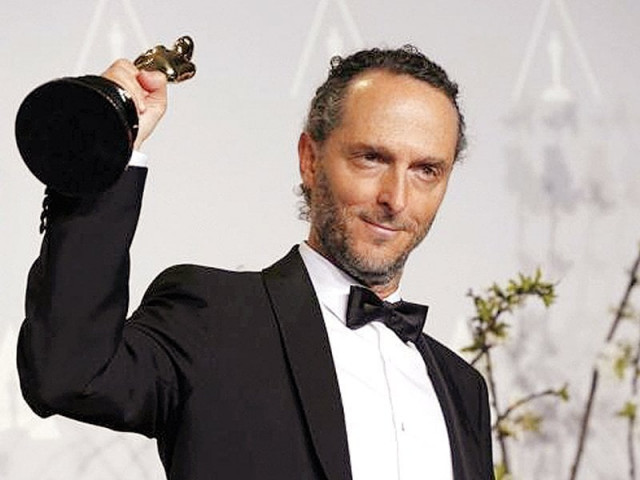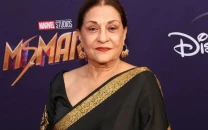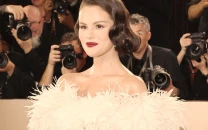Behind Emmanuel Lubezki’s one take in Birdman
The Oscar winning cinematographer talks about the challenges he undertook while shooting the much appreciated film.

Emmanuel Lubezki poses with his award for best cinematography for his film Gravity at the 86th Academy Awards in Hollywood. PHOTO: FILE
In an interview, Lubezki said his first thought was: “‘I hope I don’t get to do this’ because it was such a big challenge and I didn’t want it to be gimmicky.”
Known popularly as “Chivo” (‘goat’ in Spanish), Lubezki is a favourite to win the Academy Award on February 22 for best cinematography, a year after the Mexican earned his first for space thriller Gravity.
Birdman is also a front-runner for best picture.
A seven-time Oscar nominee, the 50-year-old Lubezki has what Inarritu describes as “beautiful talent and exquisite taste,” and together they have created a “terrific process.” They are now making their second film.
When Inarritu won the Directors Guild award last weekend, he joked with Gravity director and fellow Mexican Alfonso Cuaron about their “shared secret weapon.”

Still, Lubezki gives Inarritu full credit for the idea of the long, unbroken shot: From the beginning, the director wanted to immerse the audience in Riggan Thomson, played by Michael Keaton, and the collapse of his life as the former superhero actor attempting a comeback in his own Broadway play.
“He wanted this one shot not to be completely objective, so that made it very hard,” Lubezki said. “The shot is sometimes very subjective, so you are feeling what he is feeling and you are watching what he is watching, and then goes back to reveal the environment.”
Emotional grind
It was a formidable challenge for the actors to be filmed in long takes, accustomed as they are to working in tiny bursts of scenes. Keaton felt the full burden.
“He realised that this was no joke, that he had to learn all the dialogue and go through this whole emotional grind in very, very, long takes,” Lubezki said.
Only recently did Lubezki realize that “Michael Keaton is playing, like, five characters” in Riggan’s different states of mind.
“Sometimes he goes from one character to another, to another, in the same take with no safety net, so it is really, really hard,” he said.
The whole undertaking would have been much more taxing for Lubezki if Inarritu had gotten his wish of truly doing the movie in one unbroken shot, in a theater that had everything they needed.
“I just got lucky that we couldn’t find a theater to do all the guts of the theater and all the hallways and dressing rooms that worked,” he said. “And because of that, we had to chop.”
When they were nearly done shooting and they started to put a lot of the movie together, Lubezki said he suddenly felt “the pay-off was immense.”
“I have seen a lot of movies that have very long shots, but I have never seen a movie that is partly a comedy, that uses the close-ups these ways,” he said. “There was something very special about it.”
Published in The Express Tribune, February 15th, 2015.
Like Life & Style on Facebook, follow @ETLifeandStyle on Twitter for the latest in fashion, gossip and entertainment.



















COMMENTS
Comments are moderated and generally will be posted if they are on-topic and not abusive.
For more information, please see our Comments FAQ